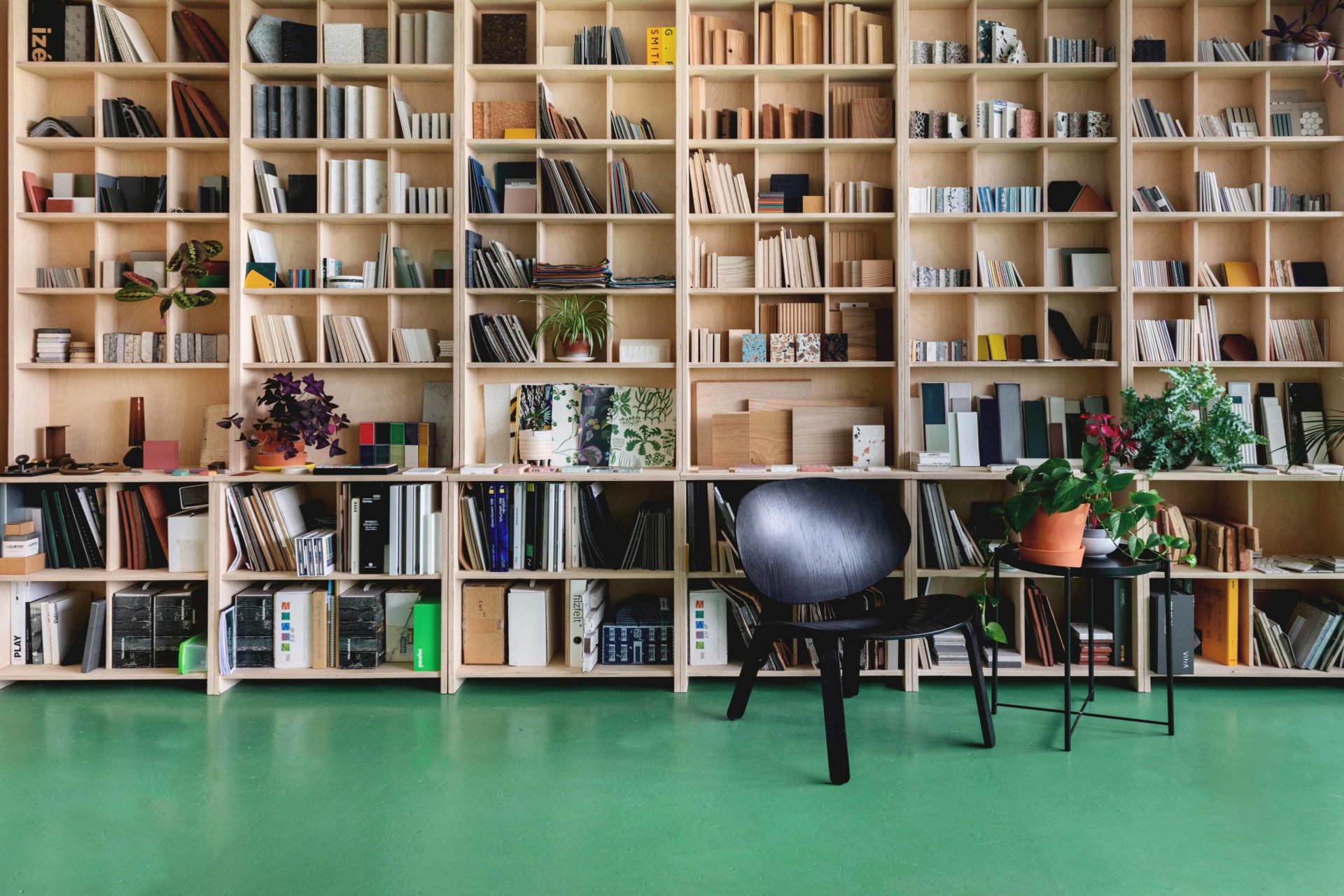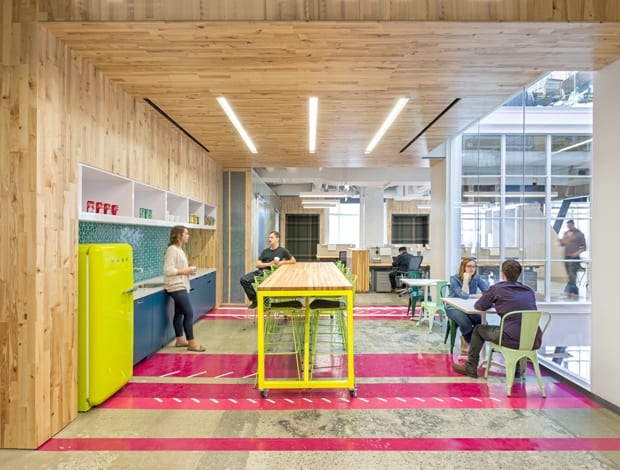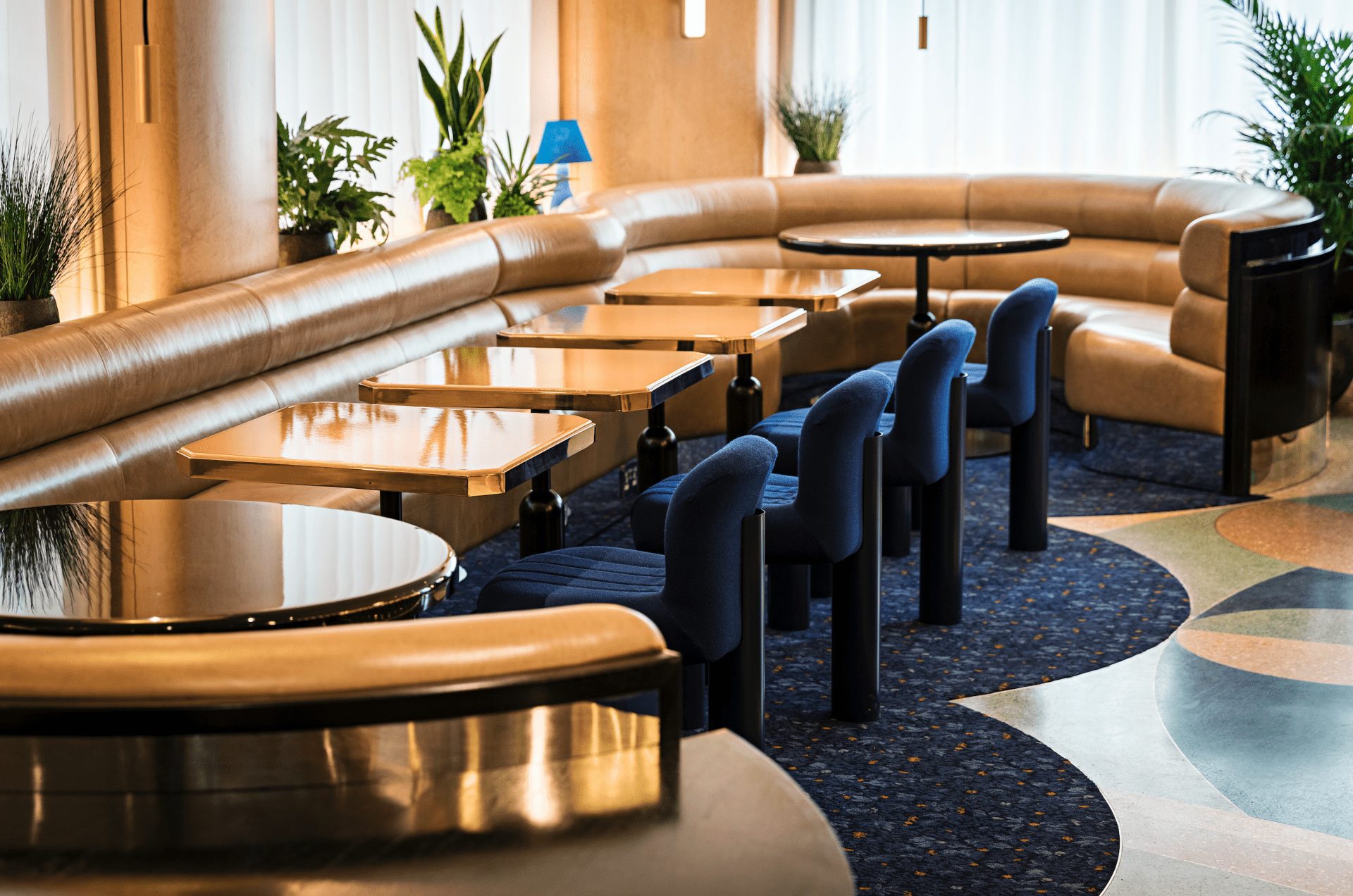 ||||
||||
Furniture maker Sebastian Cox and sculptor Laura Ellen Bacon collaborate on a unique installation
Clerkenwell Design Week’s site-specific features are always much anticipated, and this year is no exception. Among the collaborations planned for 2015 is The Invisible Store of Happiness. Located at St John’s Gate and supported by the American Hardwood Export Council (AHEC), this project brings designer Sebastian Cox and sculptor Laura Ellen Bacon.
Together, they have created a 3m-high wooden sculpture made from American maple and cherry. As with previous AHEC projects such as the Endless Stair at 2013’s London Design Festival, the intention is not just to provide a striking structure but also to promote these less popular species, something Cox is an impassioned proponent of.
“It’s all about which wood is in fashion at the moment. Cherry, for example, is beautiful but incredibly underused.”
onoffice met Bacon and Cox at the latter’s studio in Woolwich, sitting at his desk and surrounded by past designs including a particularly novel task lamp, part of Cox’s graduate work while studying design at the University of Lincoln.
“When you’re at the lathe, sometimes you lose perspective, so it’s good to come up here to the office to think about the business and future plans,” he says.
The way Cox and Bacon, who has a background in intricate landscape-inspired artwork, have come together on this project and their working process is fascinating. They ‘met’ over Twitter, having mutually appreciated each other’s work, and when AHEC came calling it seemed the time to join forces.
“The difference in the way we work is our relationship with form and materials,” says Bacon. “I use materials to make the form,” continues Cox, while Bacon has more of fluid approach to where the end result will take her. He jokes that it’s the first time a 6B pencil has been allowed into his workshop (where the 2H rules), but this mix of Bacon’s freehand sketching and Cox’s use of CAD is what makes the project special.
This installation offers a far more seductive way to encourage architects and designers to, ahem, branch out in terms of the wood they specify. The maple and cherry are crafted into an elliptical-shaped frame, huge arcs that are steam-bent in a process that takes three people walking the pieces around a mould, which has to be seen to be believed.
The steam-bent wood is hand jointed with mostly glue-less draw-bore mortice and tenon joints. Inside this solid frame, many shredded timber strips are arranged; they are made supple thanks to a soaking in the Thames near Cox’s workshop. Bacon’s artistry then comes to the fore, manipulating the strips by hand to create undulating ripples of timber.
“The structure keeps its form and sense of enclosure and stability with this alluring sense of madness inside,” says Bacon.
And the name? Well, that comes from the joy in making and handwork, something both Bacon and Cox share. Not only that, but they’ve challenged themselves to make the piece with a smaller carbon footprint than an iPhone 6.
Watching the pair interact and in many cases finish each other’s sentences, one wonders who’s really in charge in this creative partnership. “You have to listen to the feedback of the materials,” says Cox finally. “You have to let the wood be the boss.”



























